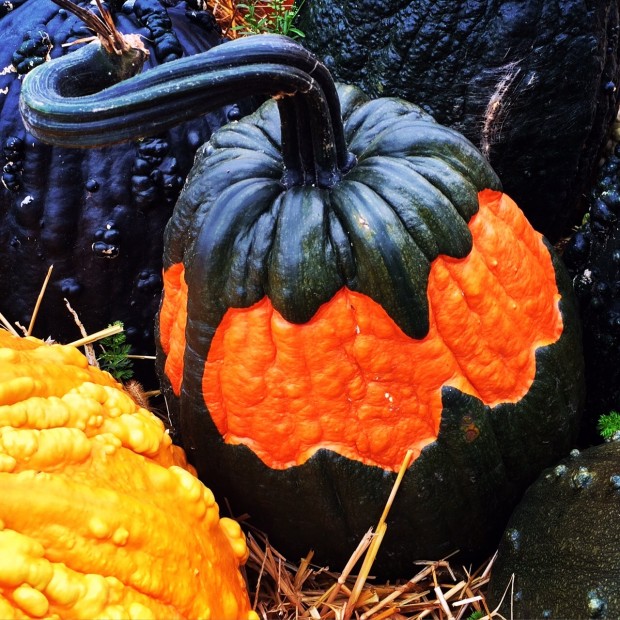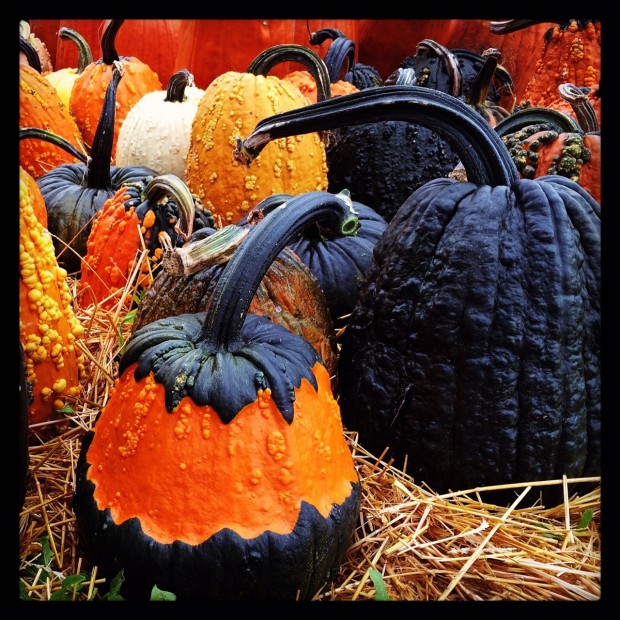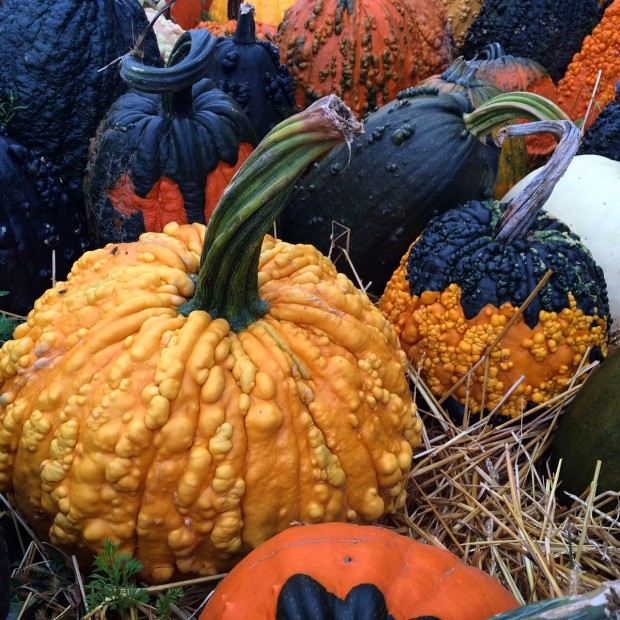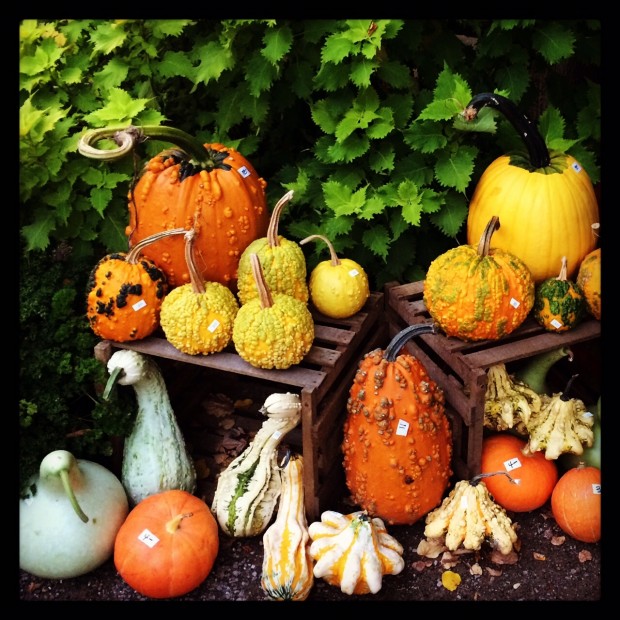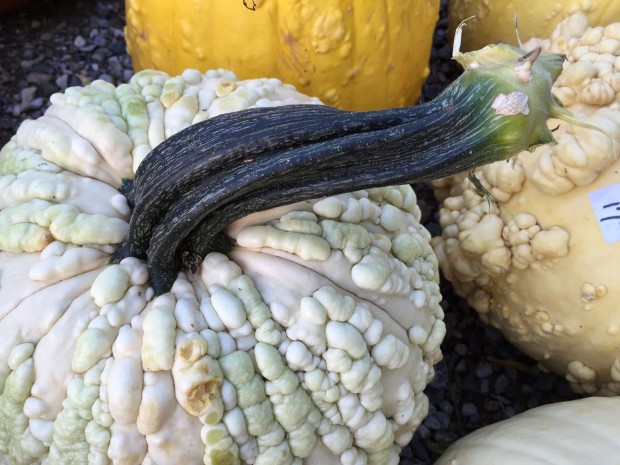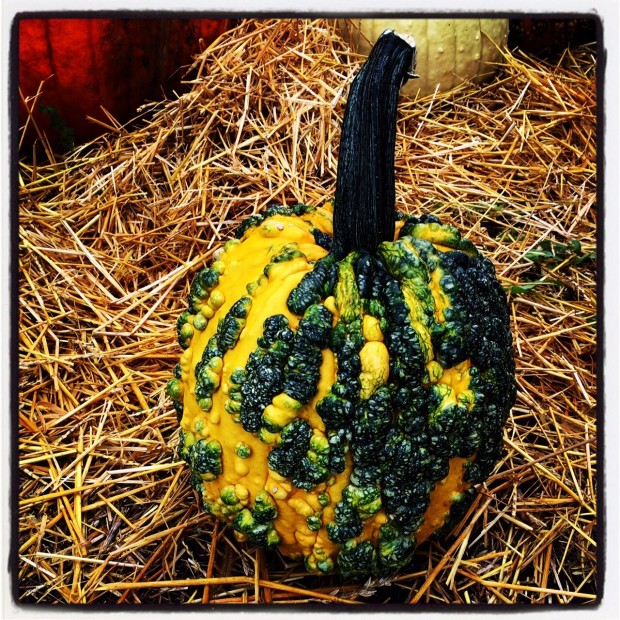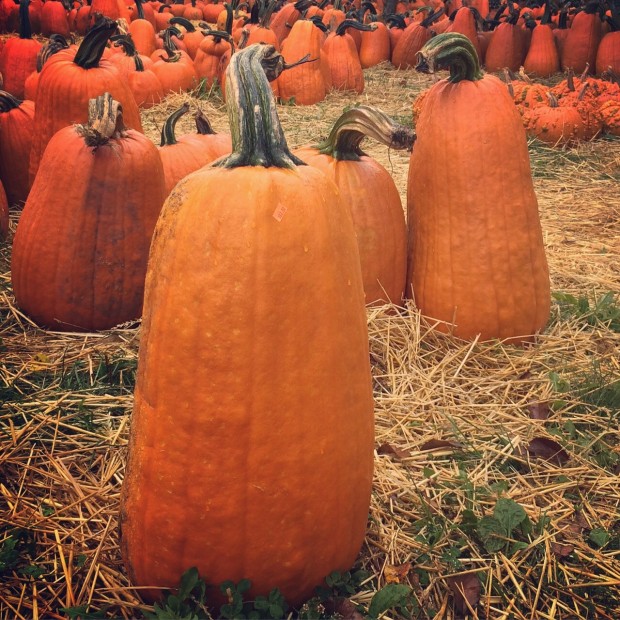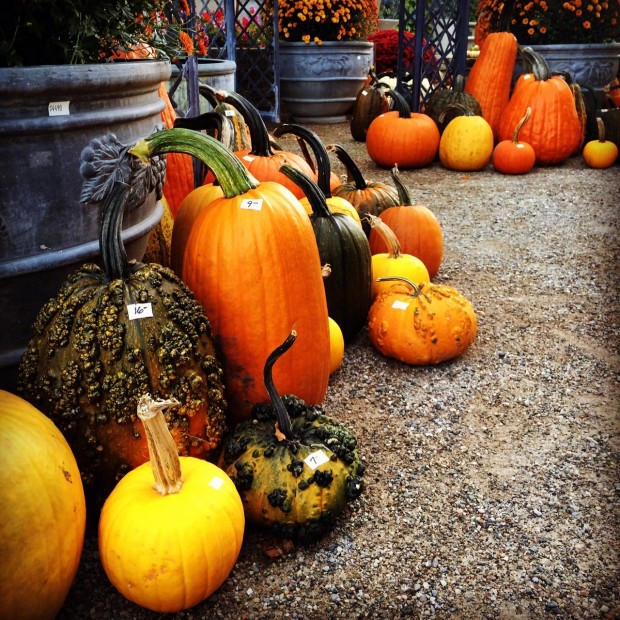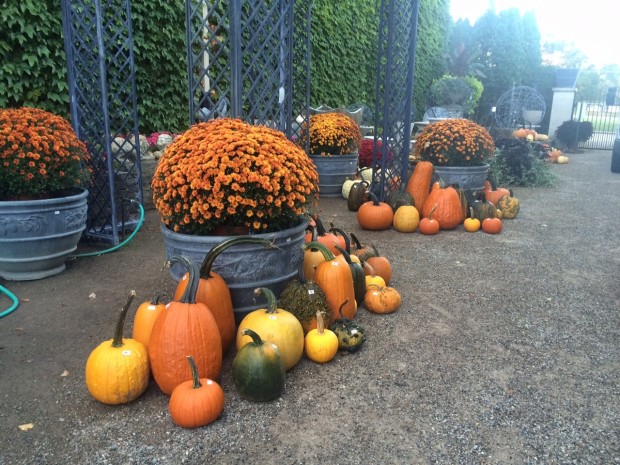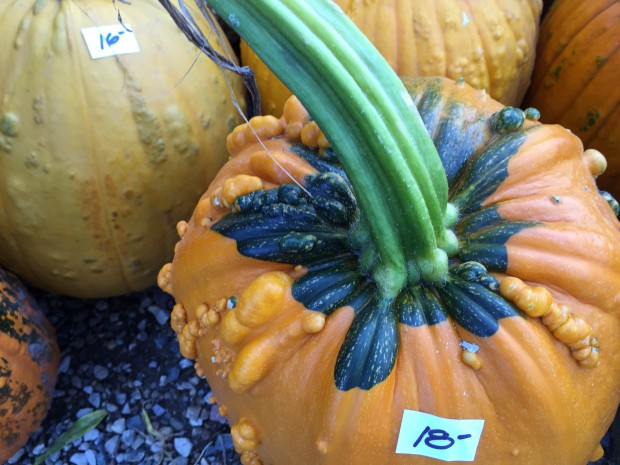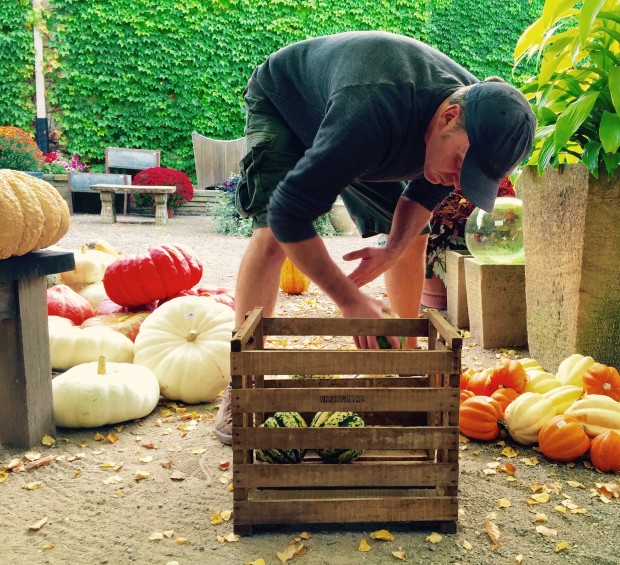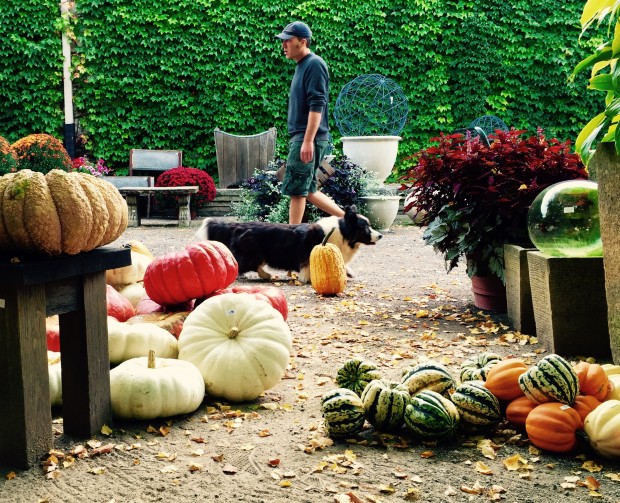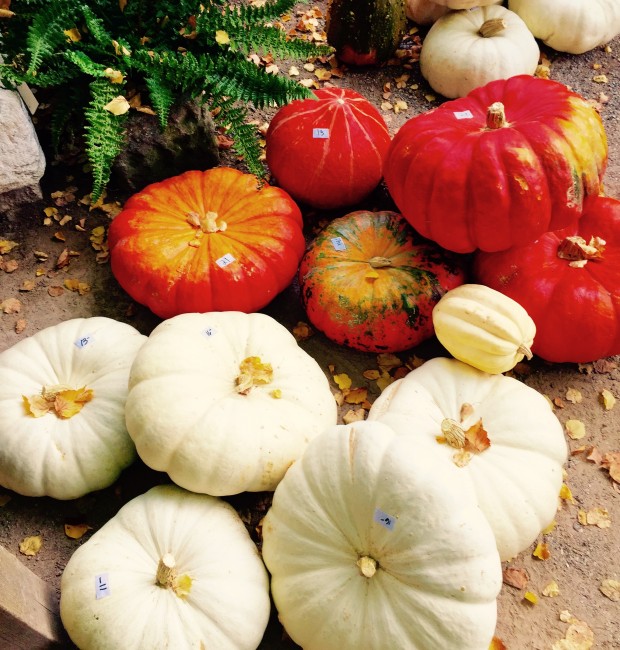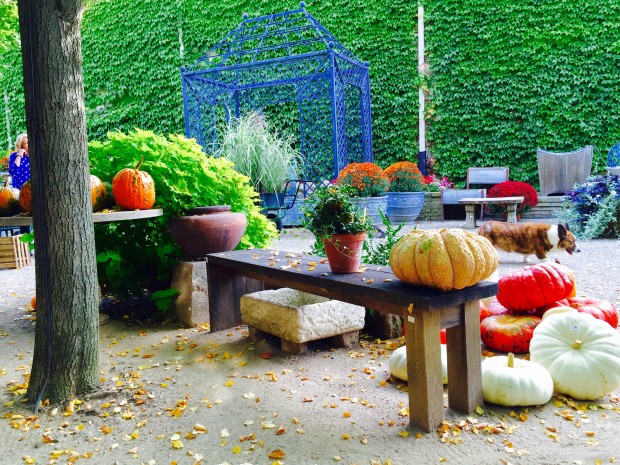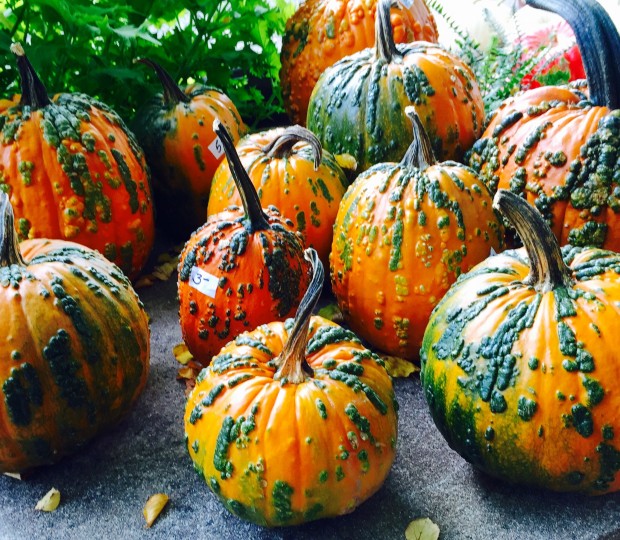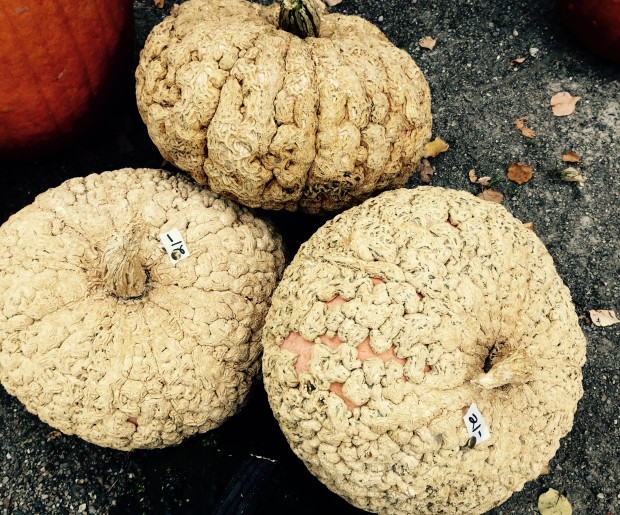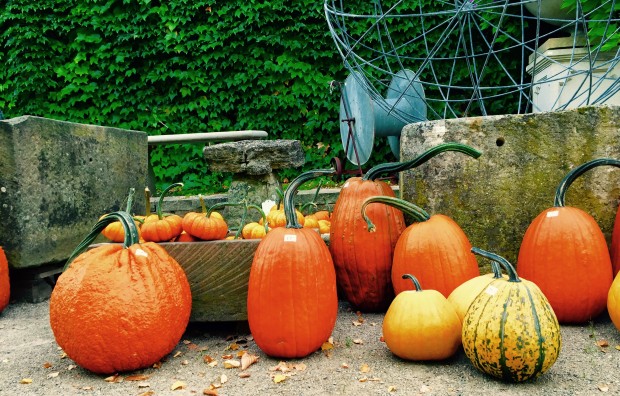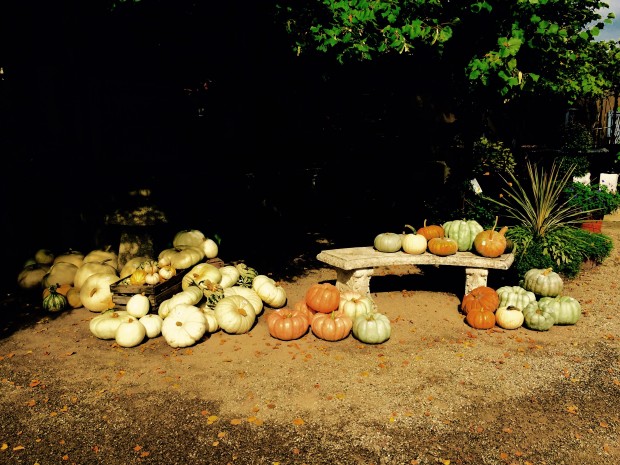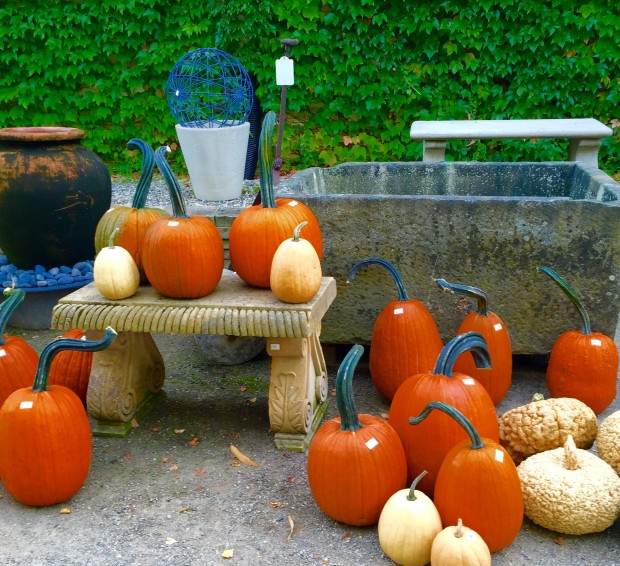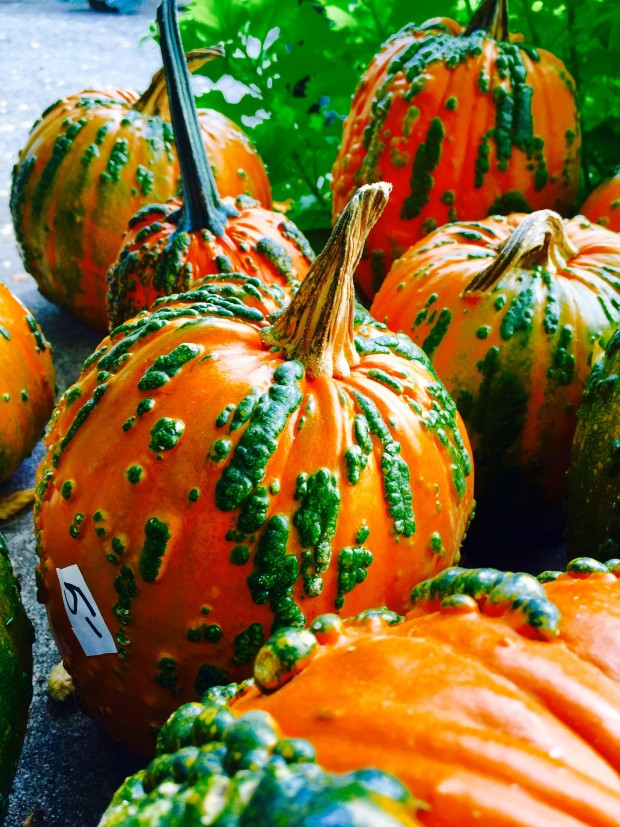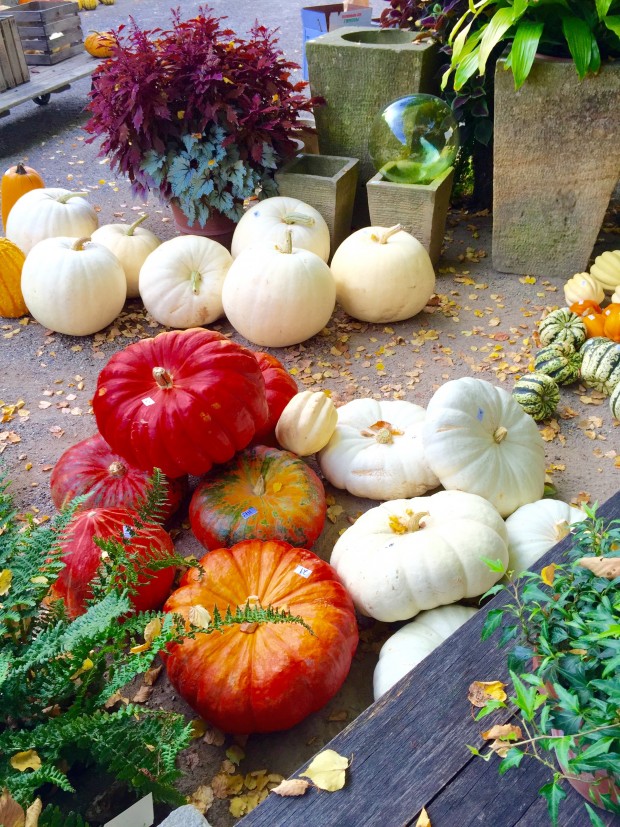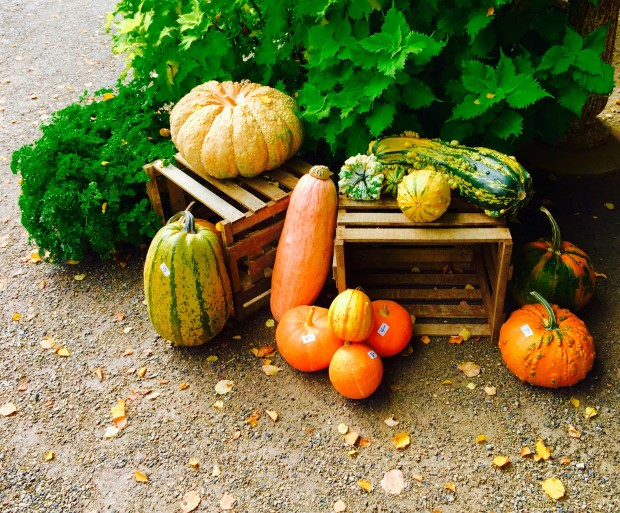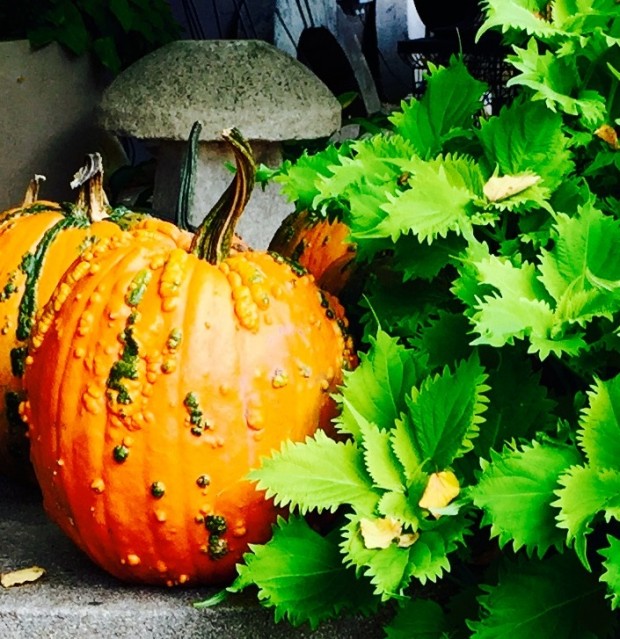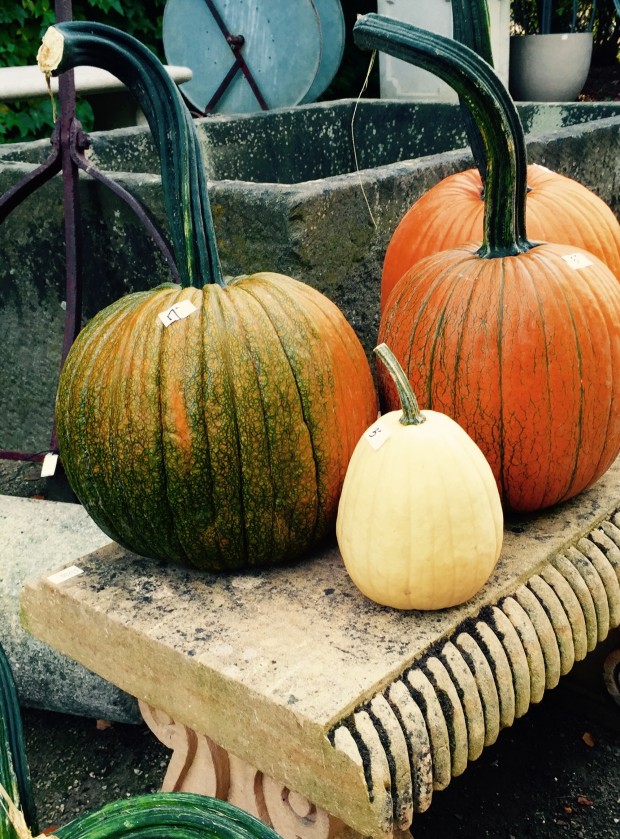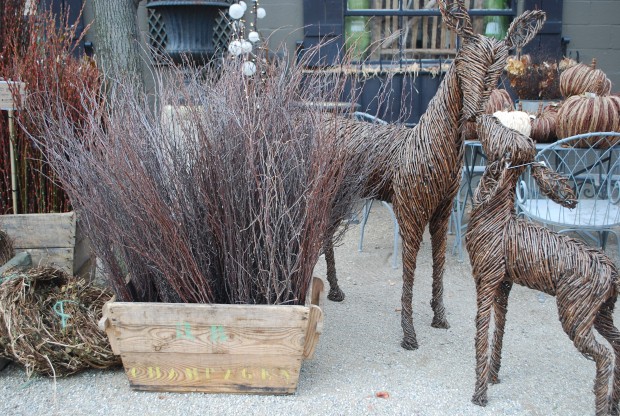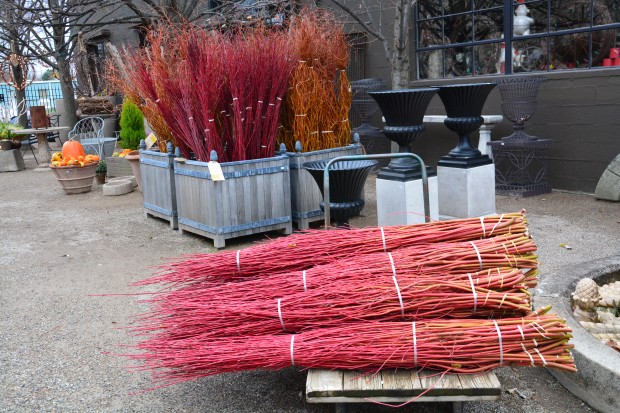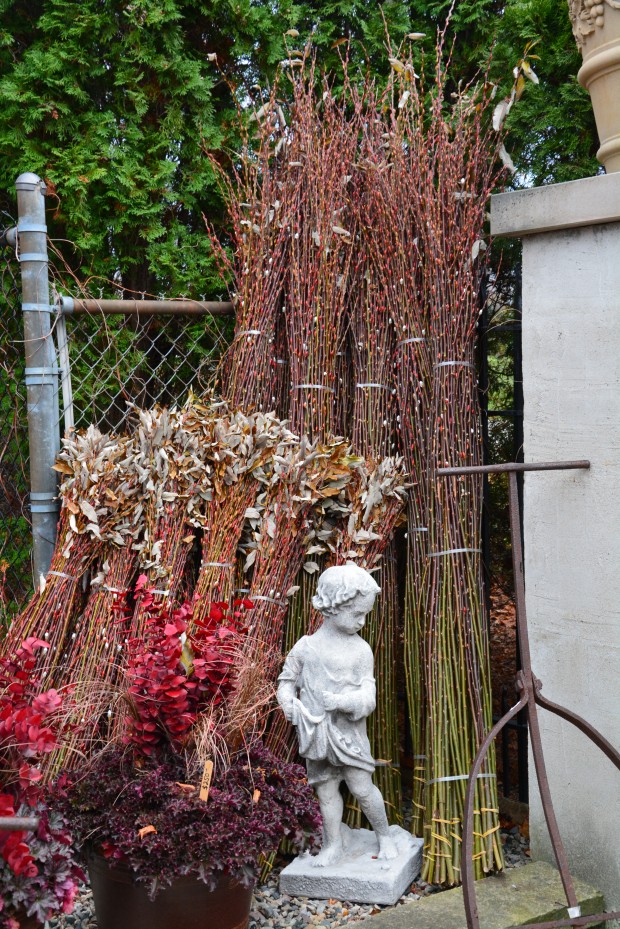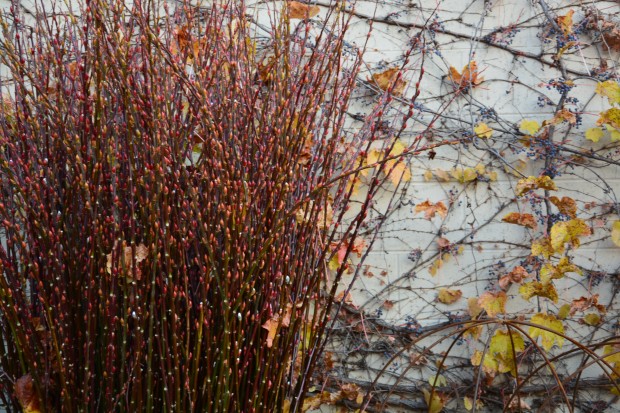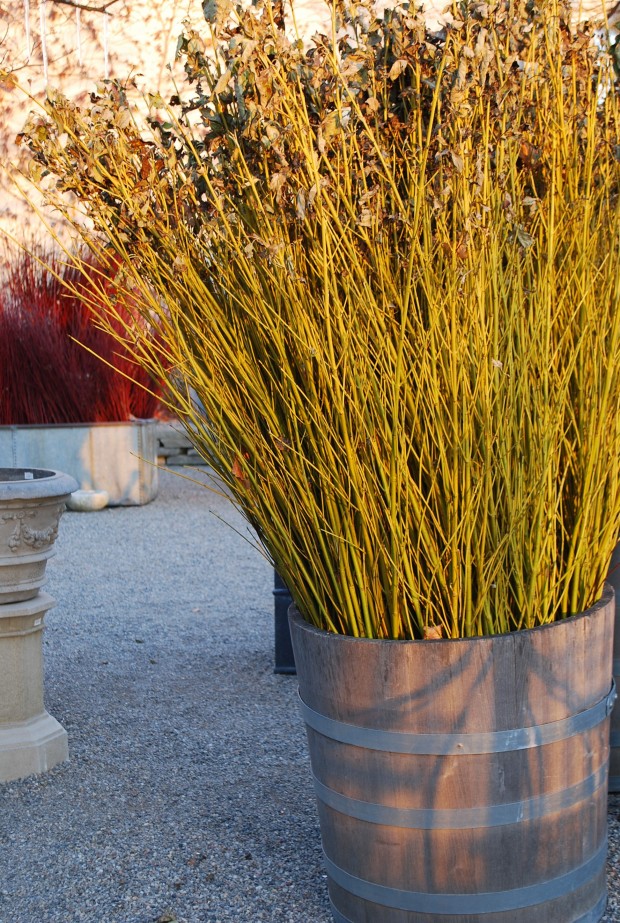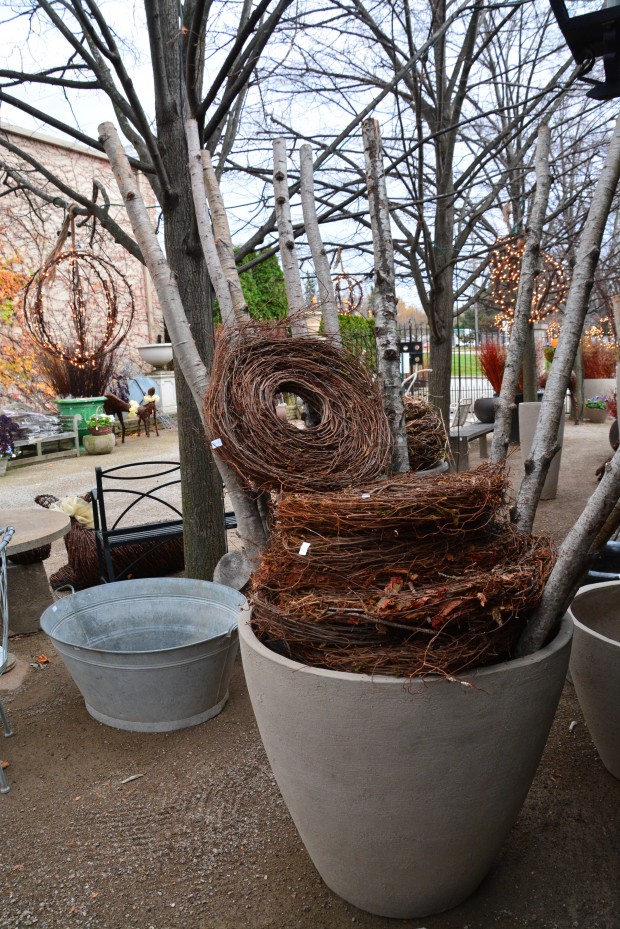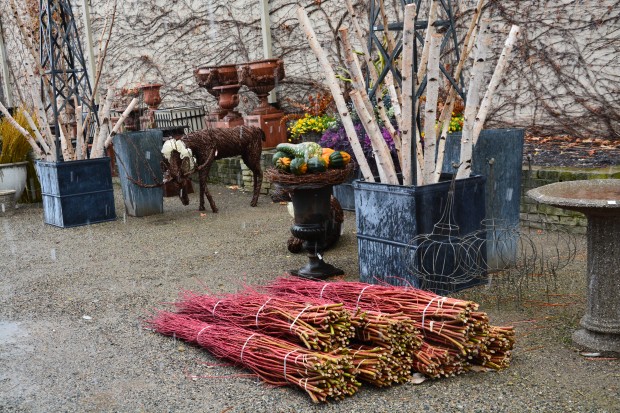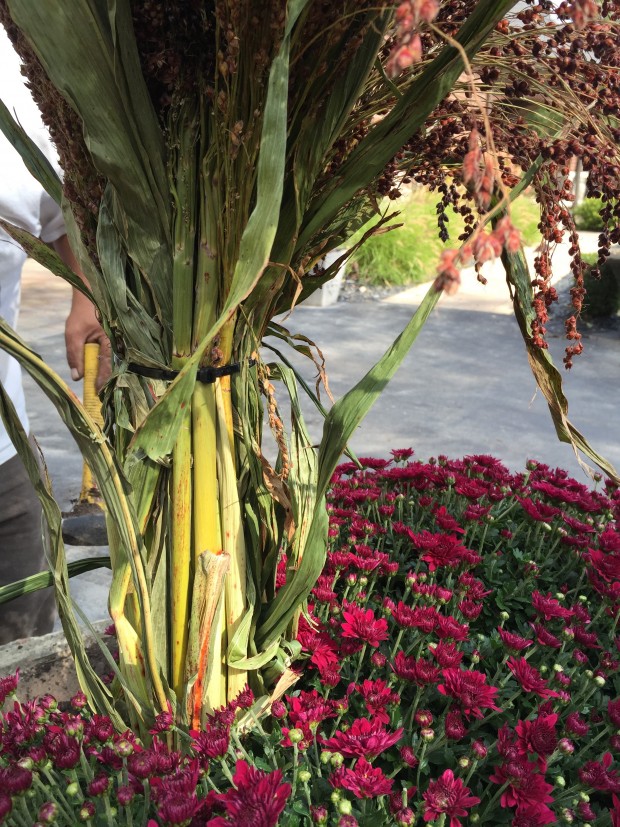 Our fall container plantings are underway. It is not always easy to convince a client that planting for fall is a good idea. In Michigan, there is this psychological perception that the spring and the fall are short seasons, and the summer and winter are long. It may feel that way, but all of the seasons are roughly equal in length. My pots at home have been great, but just today I am seeing signs of decline. The plectranthus is not liking the cold nights. The elegant feather grass is just about in full fall color. Planting pots for fall is not just about replacing summer material that is no longer looking its best. It is more about embracing and enjoying the season at hand.
Our fall container plantings are underway. It is not always easy to convince a client that planting for fall is a good idea. In Michigan, there is this psychological perception that the spring and the fall are short seasons, and the summer and winter are long. It may feel that way, but all of the seasons are roughly equal in length. My pots at home have been great, but just today I am seeing signs of decline. The plectranthus is not liking the cold nights. The elegant feather grass is just about in full fall color. Planting pots for fall is not just about replacing summer material that is no longer looking its best. It is more about embracing and enjoying the season at hand.
 One of my favorite materials for fall is broom corn. This tall grain features thick sturdy stalks, and seed heads in various shades of fall. Zip tied around a bamboo stake, the broom corn provides a striking vertical element in a pot, and will last late into the fall. Should you use it in your fall pots, be prepared for for the birds. They love the seeds. I can hardly fault them. And I enjoy all of that activity. The wiry stems under all of those seeds have been made into brooms for hundreds of years. As much as I like my brooms, I better value how broom corn can endow a fall container.
One of my favorite materials for fall is broom corn. This tall grain features thick sturdy stalks, and seed heads in various shades of fall. Zip tied around a bamboo stake, the broom corn provides a striking vertical element in a pot, and will last late into the fall. Should you use it in your fall pots, be prepared for for the birds. They love the seeds. I can hardly fault them. And I enjoy all of that activity. The wiry stems under all of those seeds have been made into brooms for hundreds of years. As much as I like my brooms, I better value how broom corn can endow a fall container.
 Chrysanthemums elicit strong opinions from every gardener. Were I thinking of planting a chrysanthemum in my garden for a yearly October display, I would plant “Sheffield Pink”. I have a next door neighbor with trees under planted with this mum-they have made an impressive show every year of the 20 years I have lived in my neighborhood. I don’t see that they get any special care or extra water. They shrug off the cold and light frosts. But for fall containers, I can be swayed by a big mum ball.
Chrysanthemums elicit strong opinions from every gardener. Were I thinking of planting a chrysanthemum in my garden for a yearly October display, I would plant “Sheffield Pink”. I have a next door neighbor with trees under planted with this mum-they have made an impressive show every year of the 20 years I have lived in my neighborhood. I don’t see that they get any special care or extra water. They shrug off the cold and light frosts. But for fall containers, I can be swayed by a big mum ball.
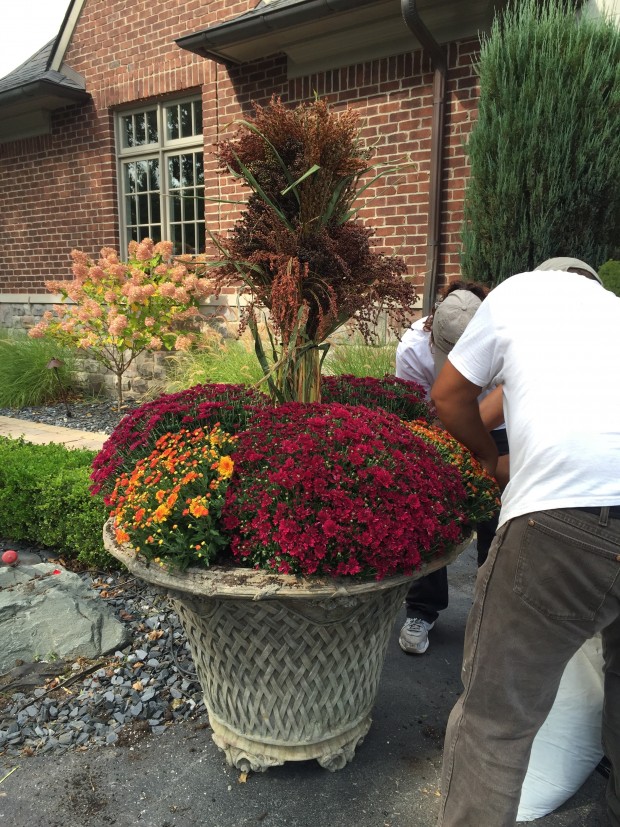 I wait to buy them. A chrysanthemum blooming in late August or September will not last through the fall season. When both the day and the night temperatures get down to 50 or lower, A chrysanthemum in bud will have some longevity. As much as I love ornamental cabbages and kales, there are those who love that color that comes from flowers.
I wait to buy them. A chrysanthemum blooming in late August or September will not last through the fall season. When both the day and the night temperatures get down to 50 or lower, A chrysanthemum in bud will have some longevity. As much as I love ornamental cabbages and kales, there are those who love that color that comes from flowers.
 Cut bittersweet is available at this time of year. The color is striking. The stems are naturally curving. Their vining shapes can loosen up the most formal and static fall planting. We buy cut stems from a grower that are loaded with seeds. As much as I know that bittersweet is invasive, I have yet to see a garden infiltrated by bittersweet from branches I have put in pots. When the fall container season is over, we are careful to dispose of the stems-we never compost them.
Cut bittersweet is available at this time of year. The color is striking. The stems are naturally curving. Their vining shapes can loosen up the most formal and static fall planting. We buy cut stems from a grower that are loaded with seeds. As much as I know that bittersweet is invasive, I have yet to see a garden infiltrated by bittersweet from branches I have put in pots. When the fall container season is over, we are careful to dispose of the stems-we never compost them.
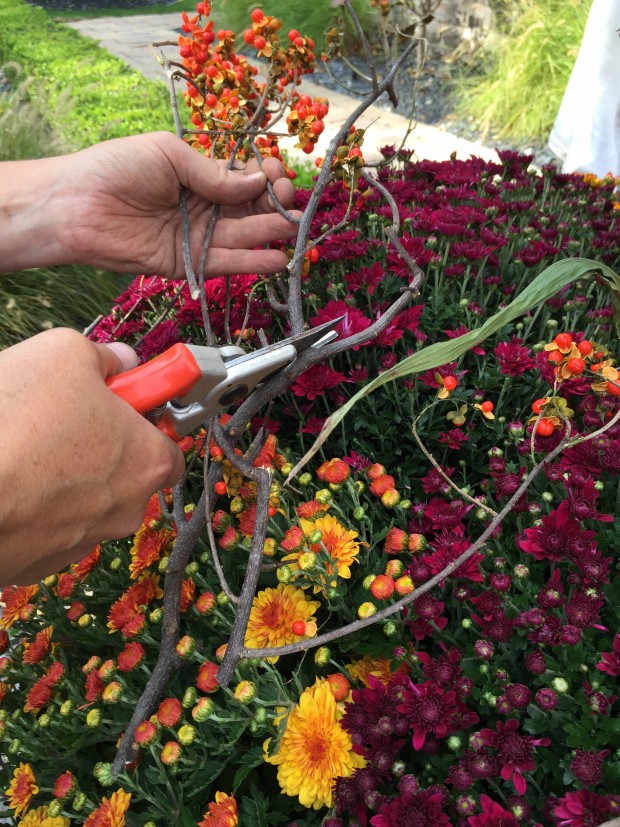 The bunches we buy are fairly short, and loaded with seeds. We may cut them down to individual stems, so we can place them all over in a pot. Though our broom corn centerpieces are zip tied in several places, we add a special zip tie-just for the bittersweet. The fall season can be rainy and blustery. Solid construction means your fall pots will look as good at the end as they do at the beginning.
The bunches we buy are fairly short, and loaded with seeds. We may cut them down to individual stems, so we can place them all over in a pot. Though our broom corn centerpieces are zip tied in several places, we add a special zip tie-just for the bittersweet. The fall season can be rainy and blustery. Solid construction means your fall pots will look as good at the end as they do at the beginning.
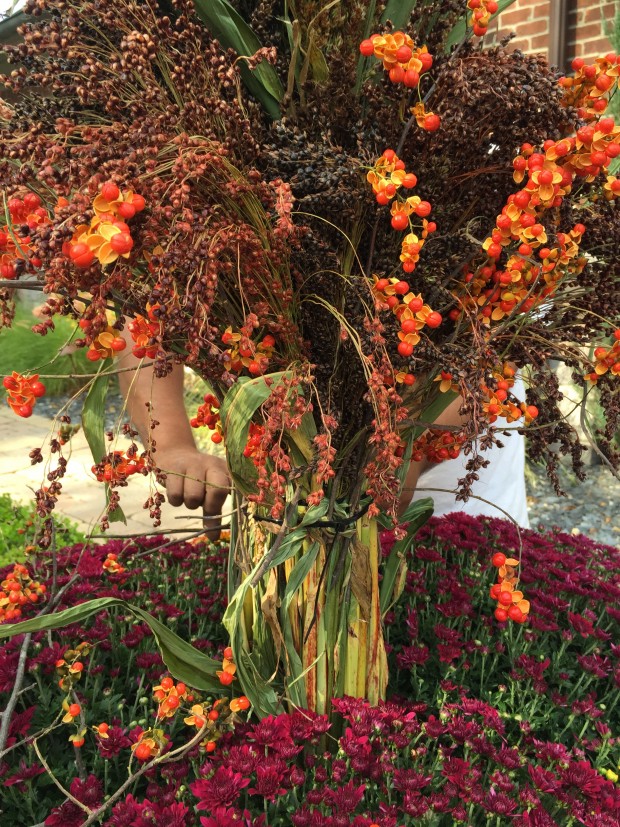 The bittersweet zip tie is loosely set at the beginning, so all of the stems going all around the centerpiece fit inside. We always have 4 hands on deck for this-sometimes 6. The desired result? A beautiful bouquet, speaking to fall. The long stalks of the broom corn help us to get a proper and proportional height to that centerpiece. Another element will be needed to cover those sticks, and the zip ties.
The bittersweet zip tie is loosely set at the beginning, so all of the stems going all around the centerpiece fit inside. We always have 4 hands on deck for this-sometimes 6. The desired result? A beautiful bouquet, speaking to fall. The long stalks of the broom corn help us to get a proper and proportional height to that centerpiece. Another element will be needed to cover those sticks, and the zip ties.
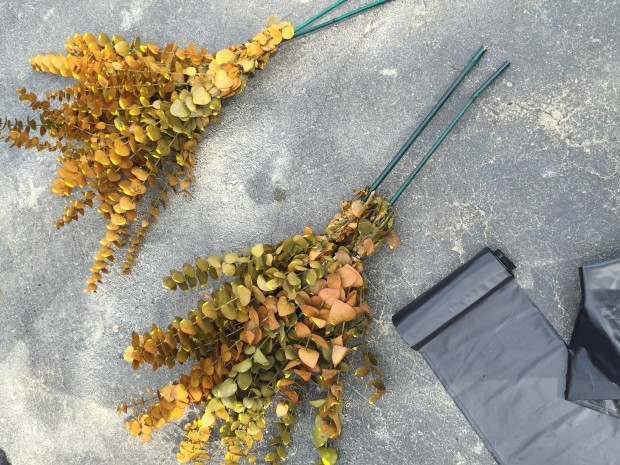 Detroit Garden Works always stocks bushel baskets full of preserved and dyed eucalyptus. We must stock better than 20 colors. Eucalyptus has the uncanny ability to absorb preservative and color. These stems are light fast, and the color does not run. The big leaves are a great texture, and the variety of color means there will be something to appeal to almost everyone.
Detroit Garden Works always stocks bushel baskets full of preserved and dyed eucalyptus. We must stock better than 20 colors. Eucalyptus has the uncanny ability to absorb preservative and color. These stems are light fast, and the color does not run. The big leaves are a great texture, and the variety of color means there will be something to appeal to almost everyone.

We attach a partial bunch of eucalyptus to a bamboo stake, so we can place it wherever an arrangement needs it. Rob and I placed an enormous order this past January. There are few materials for fall and winter pots that are as versatile, durable and satisfying as this. It is a natural material that fits right into a fall container.
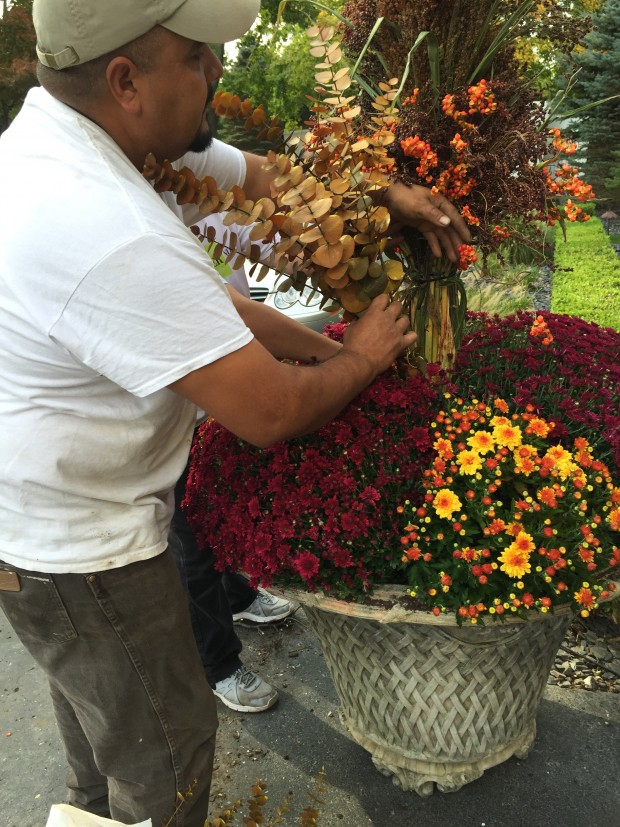
The real story here is that the natural materials part of a fall container plays a critical roll in its visual success. Cool weather means plants do not grow fast. Many of the cold tolerant plants are small in stature. Not everyone loves cabbage and kale-which has a great scale for containers. If you buy plants for fall containers, buy big ones. Pack them in. There won’t be much in the way of growing. And last of all, consider cut natural materials.
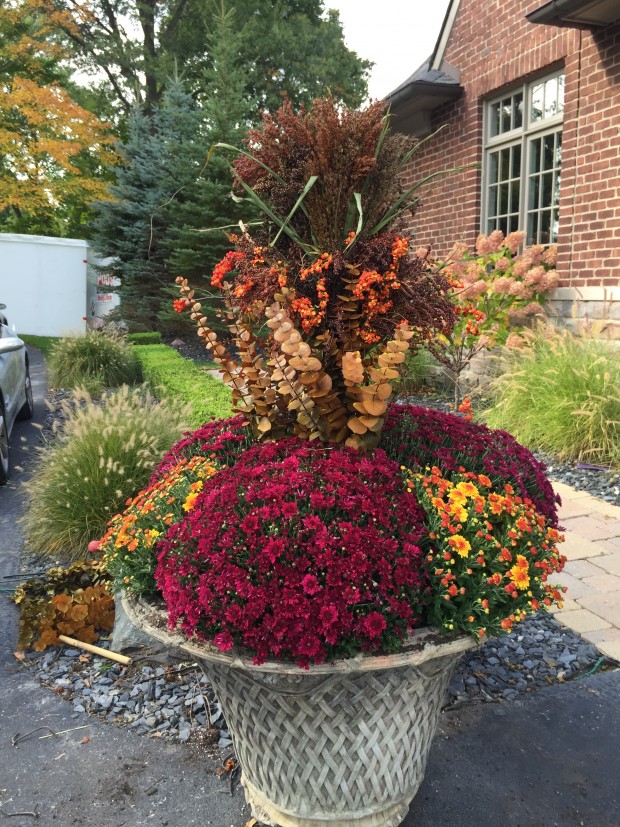 I left my crew at this point. Not that I even needed to be there. They have been doing fall pots for me for many years. And they have a gift for placement and arrangement. This pot was not done, but I could see where it was headed. Headed straight away into fall.
I left my crew at this point. Not that I even needed to be there. They have been doing fall pots for me for many years. And they have a gift for placement and arrangement. This pot was not done, but I could see where it was headed. Headed straight away into fall.
